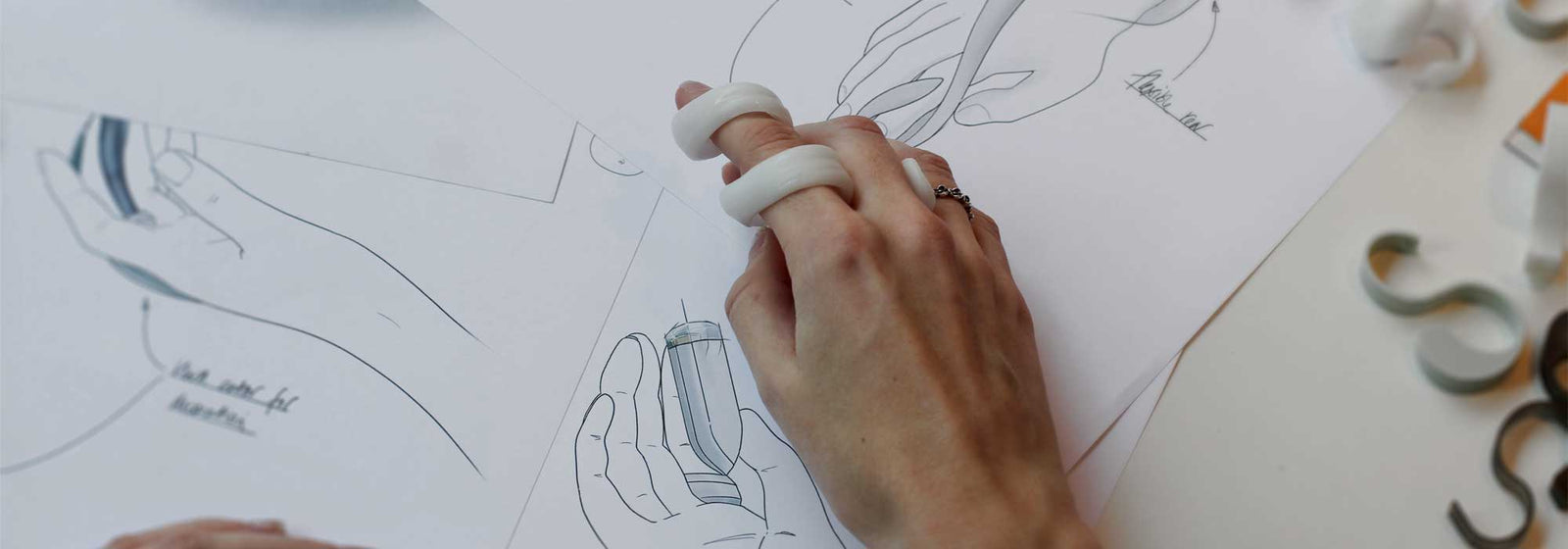Sexual Health Week , and the focus is on relationships, sex and disability. At Hot Octopuss we believe sexual expression and pleasure is a basic human right, whatever your ability. And we try to take that into account in the products we make and the ways we communicate with our customers. But we know accessibility is a huge issue, and one that we – and the industry as a whole – are only just starting to understand.
For Sexual Health Week, we decided to ask disabled sex toy users what they want companies to know about disability and pleasure products. We posted a call for interviewees on our social media accounts. Our inbox was flooded with responses, which we think says a lot about the demand for accessible sex toys and the lack of options out there.
Bunny, who experiences loss of motor control and muscle weakness when trying to use sex toys, stressed how important it is for sex toy companies to start thinking about their disabled customers. “Folks with chronic illness and disability are often desexualised or told that we shouldn’t make sex a priority,” she said. “But we have as much right to pleasure as any able-bodied or healthy person. In fact, treated as a form of self-care, pleasure and sex can often help improve our conditions in a variety of ways, not least just because it improves mood.”
Common problems with sex toys
We were contacted by customers and followers with a range of different conditions, including fibromyalgia, chronic fatigue syndrome (CFS), hypermobility, degenerative bone condition, arthritis, complex regional pain syndrome (CRPS), cerebral palsy and spinal cord injuries. Many of those who responded had erectile dysfunction as a result of their conditions.
People’s conditions all affected them very differently, but the problems they experienced with sex toys had some common themes, including:
- Trouble with grip and hand mobility making holding a toy in one position very difficult, and sometimes impossible;
- Buttons on some toys hard to distinguish or operate due to placement and/or size;
- Weight of toy making it hard to hold for any length of time;
- Lack of handle being a problem, or the handle not being the right shape or length – loops that you could hook your fingers through were appreciated.
How can manufacturers make more accessible sex toys?
The people we spoke to had plenty of thoughts on ways that these problems could be addressed by sex toy companies, including:
- Shape – including a handle that is long enough to hold without reaching, or ability to keep the toy in place hands-free;
- Soft-feel, comfortable grips with texture so they aren’t slippery when covered in lube;
- Toys you can sit on or ‘ride’;
- Long-lasting battery or mains power;
- Real, prominent buttons (rather than touchpad ones), and separate buttons for power, pattern, and strength of vibration;
- Pricing – many people with disabilities are on fixed incomes. Budget (no-frills) ranges of toys, or the option to purchase factory seconds at a reduced rate, were suggested.
Zec Richardson, who writes sex blog Sat On My Butt Reviews, said: “We think that more companies should be designing sex toys for the disabled market”.
But phone sex operator and erotica author Sammy Rei Schwarz felt the answer wasn’t in toys specifically for disabled customers, but in companies changing their approach altogether. “Sex toy manufacturers should not view their toys as ‘for able-bodied’ and ‘for disabled’ customers,” she told us. “Instead, they should assume that all their products may be used by people with varying levels of health and disability. Modifications allowing sex toys to be used with less physical strain and in a variety of positions can benefit everyone, since we all go through periods of better or worse health.”
And Rachelle Chapman, a 24-year-old queer, disabled content creator, in this video made for Sexual Health Week, said sex toy companies should consider how their marketing represents disabled people: “[People] see a mobility aid and it’s like, any sex appeal you have [goes] out of the window, almost,” she said. “[So] normalise it, because then stigma reduces. Give me women in wheelchairs in sex toy adverts.”
Charity Brook, which runs Sexual Health Week and works to improve sexual health and wellbeing for under-25s, told us how important sex toys can be in sex education. Spokesperson Isabel Inman said: “All young people have the right to healthy relationships, and sex toys can play a really positive role in self-exploration, including young people with disabilities. Sexual Expression is our new resource for young people with learning disabilities, launched for Sexual Health Week. Here we talk about using sex toys as one of the many types of sex that people can enjoy, whether this is alone or with a partner.”
There is no ‘one size fits all’ when it comes to accessible sex toys
In our years since launch, one of the biggest lessons we’ve learnt is that no sex toy works for everybody, because every body is different – and this is true whether you consider disability or not. We all have such different tastes and preferences, there is just no way to create a ‘one size fits all’ sex toy. When you add health and disability into the mix, it becomes even more difficult, because everyone tends to experience disability differently (even with the same diagnosis). That said, we want to make products that work for as many people as possible, and know we still have a long way to go when it comes to accessibility. The info provided by our interviewees will be taken on board for future product upgrades and launches.
We always want to hear from customers with disabilities and health conditions who’ve tried our products and have suggestions for improving them. From time to time we also send out free products or offer discounts to disabled customers in exchange for their honest feedback, so get in touch to find out more.

